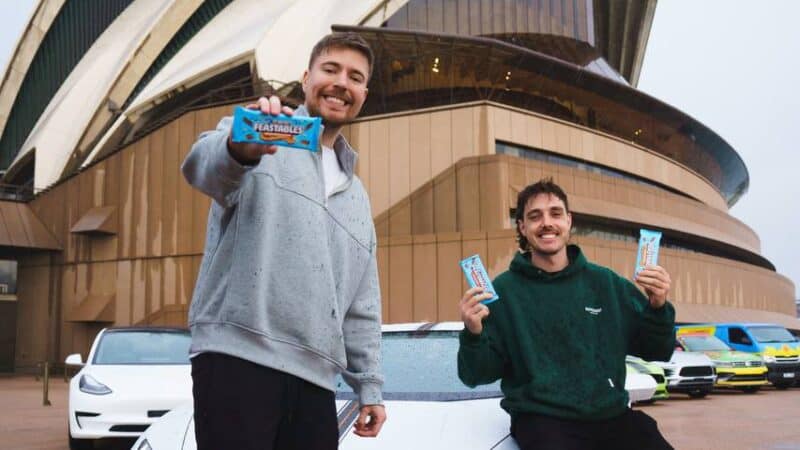Influencer brand marketing, especially within Gen Z, has completely dismantled the traditional marketing funnel, according to Australian Influencer Marketing Council (AiMCO) member Edward Deal, founder of The Gifted Group.
Deal says influencers and YouTubers have completely reinvented brand marketing, introducing what he has seen referred to as the “loop”.
“(The loop) is an infinite cycle that circulates through inspiration, exploration, community and loyalty, and it’s the best explanation of this transition I’ve seen,” he told Mediaweek.
“Brand marketing has become so much more of a reciprocal relationship now, where brands need to give back to consumers consistently, and there is where influencers, YouTubers, and creators step in.”
YouTubers such as MrBeast, Logan Paul, and KSI are prime examples of influencers ‘tearing’ apart what traditional marketing is.
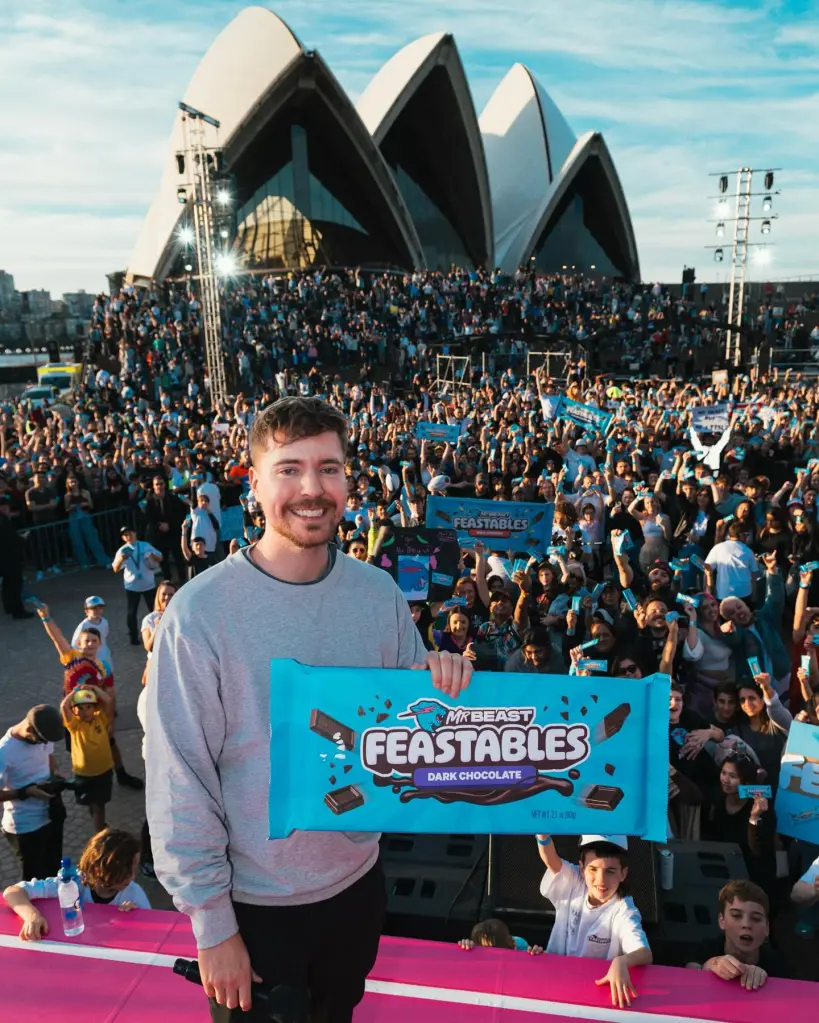
MrBeast at the Sydney Opera House for the launch of Feastables
MrBeast has an array of businesses that he now owns and runs under his YouTube name. The man behind the beast is 26-year-old Jimmy Donaldson. On top of being the world’s biggest YouTube star, he is the founder of MrBeast Burger, a fast food chain of restaurants, and Feastables, a chocolate bar brand that saw all of Sydney turn their eyes to the Opera House forecourt in June for the launch of the snack in Australia.
In potentially the biggest mass truancy event in Sydney’s history, scores of kids were present at the promotional event that saw some try their luck at winning one of 10 cars being given away, including a $450,000 Lamborghini.
Giving away luxury items or large sums of money is business as usual for Donaldson, and Deal says this is where the reciprocal nature of influencers shines.
“No one provides more value in return, often in the way of hours of entertainment, inspiration and a community to dive right into, quite like (influencers and YouTubers).”
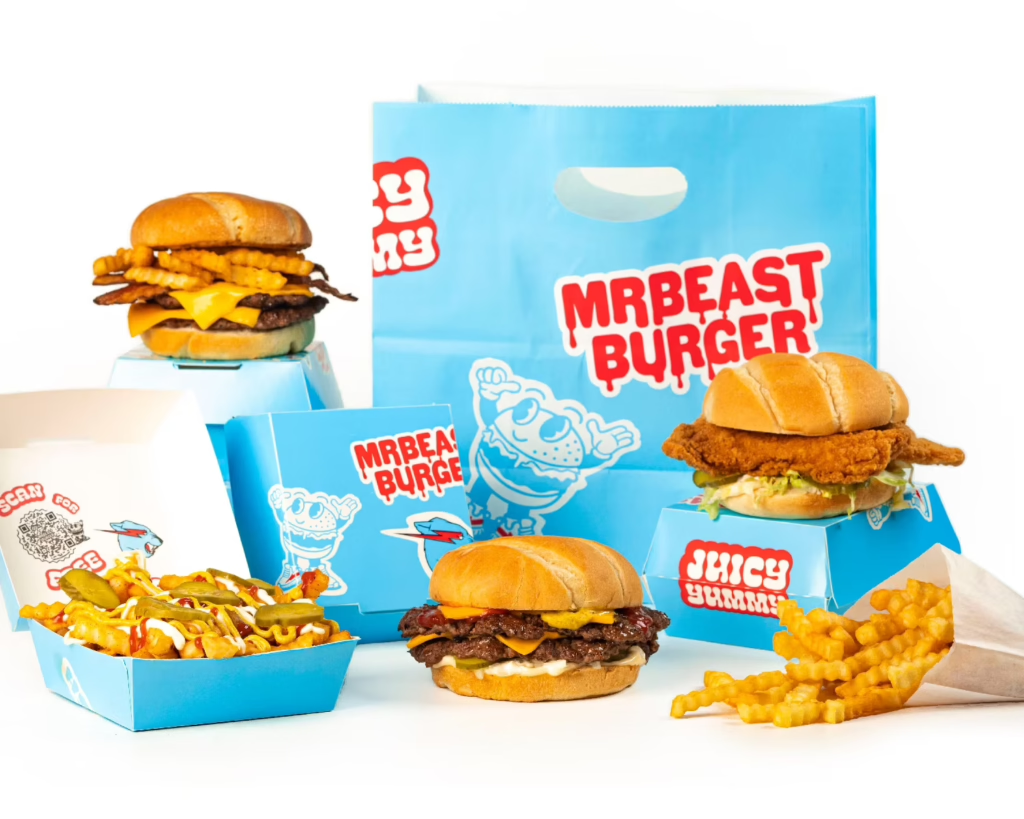
MrBeast Burger
AiMCO member Stefanie Jung, talent and partnerships director at Two Palms Media says YouTubers have mastered the art of authenticity, sharing their lives and opinions in ways that resonate with their followers.
“(They) create a sense of trust that polished advertisements often lack,” she said.
“A long-format platform like YouTube also provides a more in-depth insight into their lives compared to Instagram or TikTok, so viewers feel like they get to know YouTubers on a deeply intimate level.
“For younger audiences, these online personalities feel more like trusted friends than distant celebrities.”
Two Palms Media manages one of Australia’s top YouTubers, Sarah’s Day, and Jung said her secret to success lies in the fact that her audience feels as if they have grown up with her over the years.
“It all boils down to connection – the more viewers feel connected to the individual, the more likely they are going to buy into the influencer’s brand offering.”
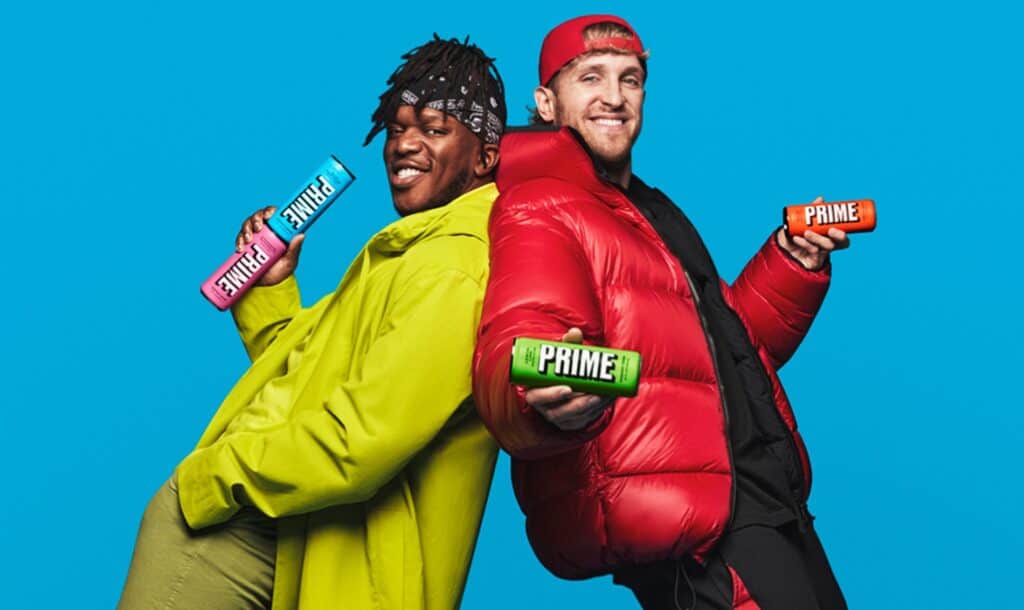
KSI and Logan Paul
Logan Paul and KSI’s hydration drink brand, PRIME also blew up in popularity last year in Australia, after it was confirmed Woolworths would be stocking the brightly coloured bottles. They come in a wide variety of flavours and have acquired endorsements from some of the world’s most popular athletes including Kevin Durant, Patrick Mahomes, Erling Haaland, and Aussie MMA fighter Alexander Volkanovski, among others.
AiMCO member Jordan Michaelides, managing director at Neuralle, says that because influencer and YouTuber brand marketing is digital-first, it gives “fantastic” measurement that traditional mediums aren’t known for.
“The CPMs – when the right talent is selected – are also fantastic compared to traditional mediums like radio and TV,” he said.
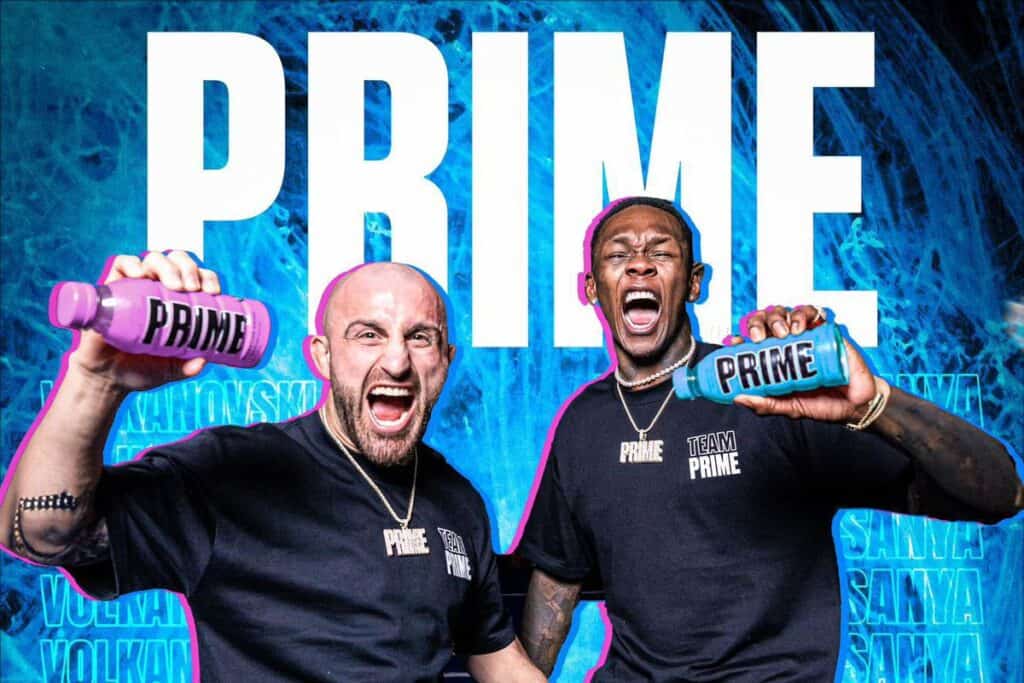
UFC fighters Alex Volkanovski and Israel Adesanya, PRIME Ambassadors
Influencer marketing agency Social Soup’s strategy behind effective influencer marketing is designed around understanding the audience it is trying to influence, and founder/CEO Sharyn Smith says this includes where they are, what influences them and the types of content and trends relevant to them.
“This is different across all demographics and niches to craft a successful strategy,” she said.
“We also believe strongly in looking at diversity in creators across different tiers, and sizes along with ensuring we are genuinely representing all cultures and subcultures in the population. Younger generations really appreciate this approach.”
Smith says influencers like MrBeast tend to build communities that are more than just numbers.
“They foster relationships with young audiences who are looking for more meaningful connections online.
“Mr Beast is also a well-known philanthropist and is very active on social media using his influence and money for positive purposes, which drives greater engagement in his brand, as he really understands his position of privilege and the need to give back, which is something that matters more to younger audiences.”
Smith believes the future of influencer and YouTuber brand marketing will be all about tapping into moments of discovery and “meeting audiences where they exist and partnering with the right people who have real influence over their lives.”
“The ecosystem of creators is only going to grow as younger audiences mature with their desire to create content and share their lives and discoveries,” she said.
“Brands need to accept this and invest more money in the people-based channels that will deliver genuine growth and sales as traditional marketing loses more ground.”
AiMCO member Stephanie Scicchitano, general manager at Born Bred Talent, believes the industry is poised for continued growth and evolution.
“We believe we are going to see more diversification of content, increased integration, sustainability and social responsibility,” she said.
“There will be greater emphasis on transparency and authenticity.”
